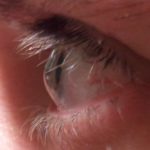 April 28-May 1, 2011: Orlando, FL —Richard A Driscoll, O.D. attended the Orthokeratology Academy of America Educational Conference. In keeping with Total Eye Care’s philosophy of providing a complete solution to their patients visual needs Dr. Driscoll has furthered his knowledge in the area of Orthokeratology a procedure where patients wear a vision retainer at night, remove the lens during the day and experience good vision all day long. Says Dr. Driscoll, “some patients simply are not surgical candidates for LASIK or PRK and want a safer alternative to refractive surgery, Orthokeratology provides that safe, effective surgical alternative.”
April 28-May 1, 2011: Orlando, FL —Richard A Driscoll, O.D. attended the Orthokeratology Academy of America Educational Conference. In keeping with Total Eye Care’s philosophy of providing a complete solution to their patients visual needs Dr. Driscoll has furthered his knowledge in the area of Orthokeratology a procedure where patients wear a vision retainer at night, remove the lens during the day and experience good vision all day long. Says Dr. Driscoll, “some patients simply are not surgical candidates for LASIK or PRK and want a safer alternative to refractive surgery, Orthokeratology provides that safe, effective surgical alternative.”
Current research also shows that the same vision retainers used in Ortho-K can slow myopic progression in children. Said Dr. Driscoll “parents often ask if there is anything they can do to prevent their child from becoming more nearsighted. We can now tell them that studies show Orthokeratology vision retainers significantly slow the progression of nearsightedness in children. New lens designs were also discussed at the meeting and we expect they will be shown to be even more effective. Early reports on these new lens designs will likely be presented next year.”
The keynote address, Myopia as a Public Health Concern, was given by Melbourne Hovell, Ph.D., M.P.H. The international faculty of presenters covered topics including myopia control (including soft lens technology), corneal reshaping research, safety of corneal reshaping, progressive/hyperopic Ortho-K lens designs, new corneal reshaping technologies, post LASIK lenses, Keratoconus / Ortho-K lenses, lens designs for corneal rehabilitation, corneal cross-linking and Ortho-K in China. “This is by far the most widely attended meeting on Orthokeratology and myopia control in the world. There were doctors in attendance from every continent except Antarctica” said Dr. Richard Driscoll, “controlling the progression of myopia was a central theme to the meeting.”
President Dr. Cary Herzberg had the pleasure of announcing the inception of the new International Academy of Orthokeratology(IAO). The IAO brings together Ortho-K organizations from the United States (OAA) as well as Europe and Asia. This international organization will support, promote and advance corneal reshaping worldwide through quality education and research presentations at meetings held around the world.
About Dr. Driscoll and Total Eye Care
 Dr. Richard Driscoll is a Therapeutic Optometrist and Optometric Glaucoma Specialist. Dr. Driscoll has been taking care of patients in Colleyville and Keller, Texas since 1995. Dr. Driscoll sees a wide variety of patients however his clinical interests include myopia control / orthokeratology, connective tissue disease, keratoconus, post refractive surgery and anterior segment disease.
Dr. Richard Driscoll is a Therapeutic Optometrist and Optometric Glaucoma Specialist. Dr. Driscoll has been taking care of patients in Colleyville and Keller, Texas since 1995. Dr. Driscoll sees a wide variety of patients however his clinical interests include myopia control / orthokeratology, connective tissue disease, keratoconus, post refractive surgery and anterior segment disease.
More information on Ortho-K and Total Eye Care is available at
www.OrthoKDoctor.com
www.TotalEyeCare.com
OrthoKeratology posts on The Eye Doc Blog









